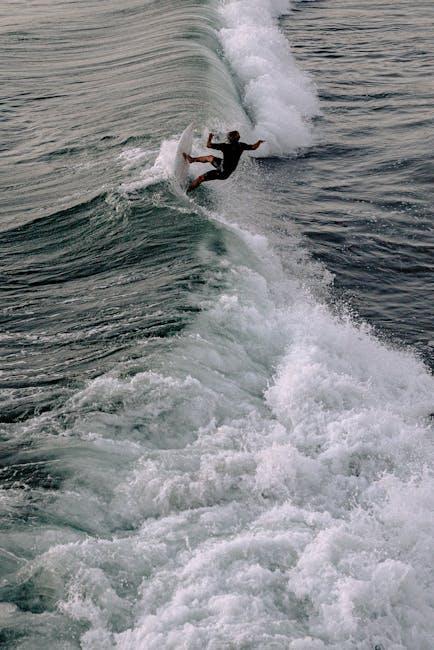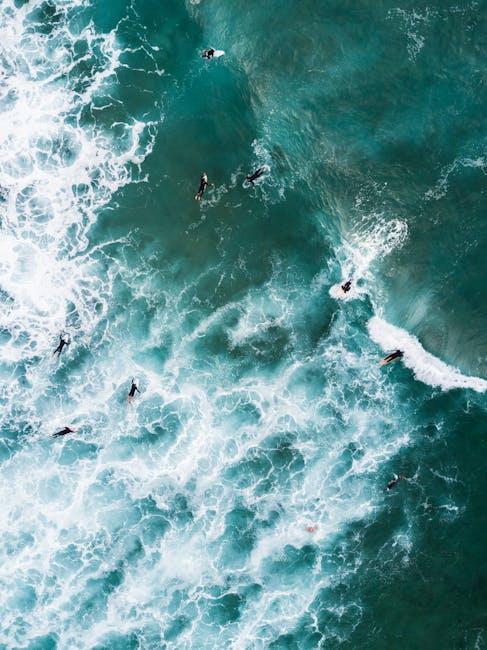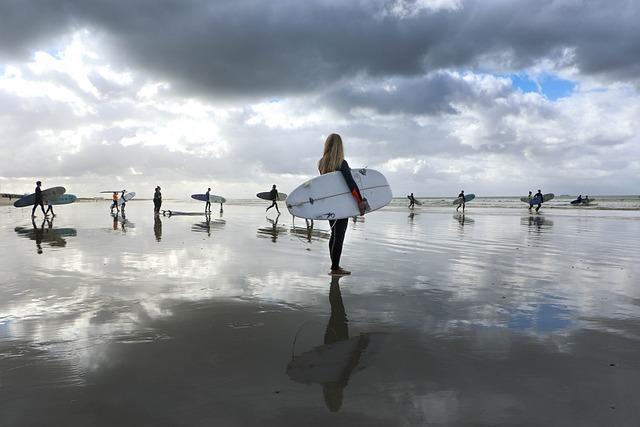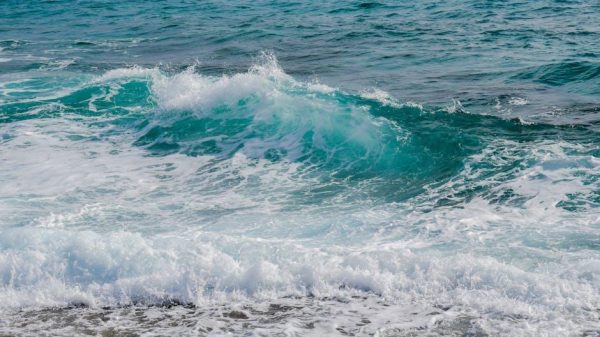In the frothy dance between ocean and athlete, surfing competitions are a thrilling testament to human spirit and nature’s raw power. But beneath the crashing waves and triumphant cheers lies a growing concern: the impact of these events on the delicate marine ecosystems they celebrate. As more surfers flock to the world’s pristine coastlines, the question arises—should we limit the number of participants in these competitions to safeguard the very environments that inspire them? This article delves into the heart of this debate, exploring the balance between human passion and ecological preservation. Join us as we ride the waves of this crucial conversation, where the stakes are as high as the towering swells themselves.
Balancing Waves and Wildlife: The Environmental Impact of Surfing Events
In the vibrant dance between ocean waves and coastal ecosystems, surfing events hold a unique place. While these competitions bring joy to many, they also pose significant challenges to the delicate balance of marine life and habitats. Surfing competitions, with their influx of participants and spectators, can lead to increased pollution, disruption of local wildlife, and habitat degradation. Sensitive coastal areas are often home to diverse species that can be easily disturbed by the noise and activity generated during these events.
To mitigate environmental impacts, organizers might consider implementing strategies such as:
- Limiting participant numbers to reduce human footprint and minimize disturbances.
- Scheduling events during off-peak wildlife activity periods, ensuring minimal disruption to feeding and breeding patterns.
- Encouraging sustainable practices among participants and spectators, like waste reduction and eco-friendly transport options.
- Engaging with local conservation groups to monitor and manage environmental impacts effectively.
By adopting these measures, the surfing community can enjoy the thrill of competition while also respecting and preserving the precious ecosystems that make these events possible.

Riding the Fine Line: How Participant Caps Could Preserve Marine Habitats
Surfing competitions draw enthusiasts from around the globe, all eager to showcase their skills on the world’s most challenging waves. However, the impact of these events on marine habitats can be significant. By introducing participant caps, organizers could strike a balance between celebrating the sport and preserving the delicate ecosystems that host these competitions. By limiting the number of competitors, the environmental footprint of each event is reduced, minimizing disturbances to marine life and allowing natural habitats to recover more effectively.
- Reduced Erosion: Fewer participants mean less human-induced erosion of coastal areas, protecting nesting sites for marine creatures.
- Lower Pollution Levels: Smaller crowds result in reduced waste and pollution, ensuring cleaner waters for both marine life and future events.
- Conservation Awareness: Caps can foster a greater sense of responsibility and awareness among participants and spectators about the importance of conserving marine environments.
By implementing these caps, surfing competitions can continue to thrive while respecting and protecting the natural world that makes the sport possible. This approach not only preserves the beauty and biodiversity of our oceans but also ensures the sustainability of surfing as a global pastime for generations to come.

Eco-Friendly Competitions: Strategies for Sustainable Surfing Events
In the quest for a greener planet, surfing competitions are turning the tide towards sustainability by adopting innovative strategies that preserve the delicate balance of marine ecosystems. One compelling approach is to limit the number of participants, a move that not only protects fragile marine environments but also enhances the quality of the competition. By reducing the crowd, event organizers can ensure that fewer resources are consumed and the ecological footprint is minimized. This approach resonates with the growing consciousness among surfers and audiences alike, who increasingly value the environmental impact of their beloved sport.
- Enhanced Experience: Fewer participants mean less congestion, allowing surfers to perform at their peak and audiences to enjoy an unimpeded view of the action.
- Resource Management: With a controlled number of participants, the need for facilities, energy, and waste management is significantly reduced, leading to a more sustainable event.
- Community Engagement: Limiting numbers encourages local involvement and education about the importance of conserving the natural environment.
Adopting these strategies positions surfing competitions as pioneers in eco-friendly sporting events, fostering a harmonious relationship between sport and nature.
Setting the Limit: Expert Recommendations for Protecting Coastal Ecosystems
As the popularity of surfing competitions surges, the environmental impact on coastal ecosystems is a growing concern among experts. Balancing the thrill of the sport with ecological responsibility is crucial. Specialists recommend implementing limits on the number of participants to minimize disruption to marine life and coastal habitats. Such measures can help in preserving the delicate balance of these ecosystems while still allowing enthusiasts to enjoy the sport.
Key recommendations from environmental experts include:
- Limiting participant numbers to reduce crowding and physical impact on beaches.
- Implementing rotation systems for different competition zones to allow natural recovery.
- Promoting sustainable practices among participants, such as waste reduction and eco-friendly equipment.
- Collaborating with local conservation groups to monitor and protect wildlife during events.
These strategies are designed not only to protect the environment but also to ensure that the sport can be enjoyed by future generations. Embracing these expert recommendations can lead to a more sustainable approach to hosting surfing competitions, setting a precedent for responsible sporting events worldwide.
In Retrospect
As the sun dips below the horizon, casting a golden glow over the endless ocean, we are left to ponder the delicate dance between human passion and nature’s preservation. Surfing competitions, vibrant with the spirit of adventure and camaraderie, are more than just a spectacle—they are a testament to our connection with the sea. Yet, as the waves relentlessly remind us, this connection comes with a responsibility. By considering limits on participation, we not only safeguard the fragile ecosystems that support our sport but also ensure that future generations can ride the same waves we cherish today. Let us be the stewards of the sea, balancing our love for surfing with a commitment to conservation. The ocean’s song is eternal, but it is up to us to ensure it remains harmonious. As we move forward, may we ride each wave with mindfulness, honoring the waters that give us so much joy.










